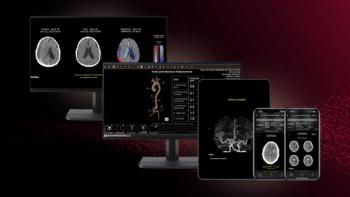Monitoring and comparing CT radiation doses across institutions results in lower radiation doses for chest and abdominal CT and more consistent doses for head CT, according to a study published in JAMA Internal Medicine. Researchers from California performed a before/after interventional study to assess the impact of institutional-level audits and collaborative efforts to share best practices on CT radiation doses across five University of California (UC) medical centers. The researchers prospectively collected radiation dose metrics on all diagnostic CT examinations performed between Oct. 1, 2013, and Dec. 31, 2014, at the five medical centers. Baseline was data from 29,594 CT scans performed over a three-month period. From this, the researchers created audit reports detailing the distribution of radiation dose metrics for chest, abdomen, and head CT scans. In April, the reports were shared with the medical centers and radiology professionals from the centers were invited to a 1.5-day in-person meeting to review reports and share best practices. Data were, then, obtained from another 32,839 CT scans performed 12-to-24 weeks after the audit and meeting. To determine the impact of the audits and information-sharing, the researchers calculated changes in mean effective dose 12 weeks before and after the audits and meeting, excluding a 12-week implementation period when medical centers could make changes. They compared proportions of examinations exceeding previously published benchmarks at baseline and following the audit and meeting, and calculated changes in proportion of examinations exceeding benchmarks. The results of their study showed a decrease in mean effective dose for both chest and abdominal CTs and a slight increase for head scans. Mean effective dose: Before Audit &. After Audit &. Change in Meeting Meeting Mean DoseChest CT 13.2 mSv 10.7 mSv 18.9% reductionAbdominal CT 20.0 mSv 15.0 mSv 25.0% reductionHead 2.4 mSv. 2.5 mSv 4.0% increase Reductions at individual medical centers ranged from 3.8 percent to 23.5 percent for CT scans and from 10.8 percent to 34.7 percent for abdominal CT scans. The number of CT scans that had an effective dose measurement that exceeded benchmarks was reduced considerably by 48 percent and 54 percent for chest and abdomen, respectively. Head CT doses varied less after the audit and meeting, although some institutions increased and some decreased mean head CT doses and the proportion above benchmarks. The researchers concluded that reviewing institutional doses and sharing dose-optimization best practices resulted in lower radiation doses for chest and abdominal CT and more consistent doses for head CT.




























